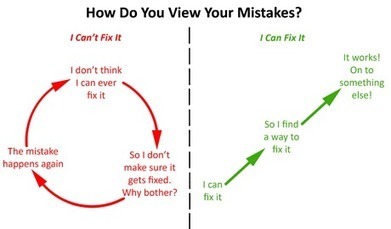What are the Biggest Mistakes Teachers Make When Integrating Technology into the Classroom?
The word “mistake” is a harsh word. It implies flaws, pointing fingers, errors in judgement, something wrong and possibly even a dead end. I would rather think or connect the word “mistake” to first steps, stepping stones, experimentation and exploration. With that being said, those “first steps” or that exploration cannot become a routine cemented in stone how technology is being used in the classroom. Stepping stones are meant to lead to something else.
For the sake of the prompt given, here are my top 5 “Mistakes” (in no particular order) which I see, read and hear about as I travel the world to learn and work with schools, teachers and students:
- Technology being used to substitute an analog activity
- Technology use being seen as an add-on to allow students to use devices, the Internet, a program or an app as a reward, for entertainment, as a time filler for students who finish early
- Technology use as a separate subject area
- Technology as a $1000 pencil initiative
- Technology seen as the solution to motivate and engage students



 Your new post is loading...
Your new post is loading...










There certainly are a bunch of problems with adding new stuff to a course that already exists!
- Technologie utilisée pour substituer une activité analogique. (NDLR: Quoiqu'il faille bien commencer quelque part!)
- Utilisation de la technologie considérée comme un add-on pour permettre aux étudiants d'utiliser des dispositifs, l'Internet, un programme ou une application comme une récompense, pour le divertissement, comme un passe-temps pour les étudiants qui terminent plus tôt.
- Utilisation de la technologie comme un sujet distinct du cours.
- La technologie comme un crayon à € 1000.
- Technologie vu comme la solution pour motiver et engager les élèves.
Nem sempre, nem nunca.
Tecnologia em sala de aula: só quando faz sentido!